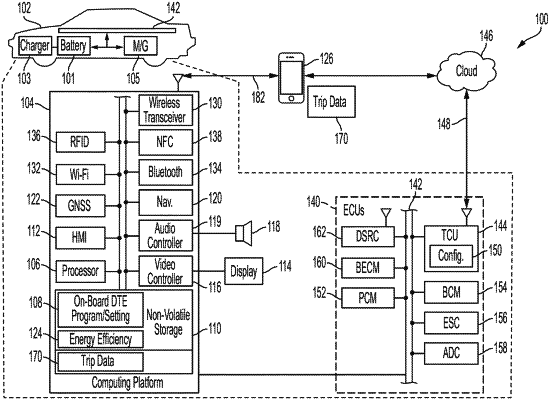| CPC B60W 20/12 (2016.01) [B60L 58/12 (2019.02); B60W 10/26 (2013.01); B60W 10/30 (2013.01); B60W 2556/50 (2020.02)] | 15 Claims |

|
1. An electrified vehicle, comprising:
a traction battery;
a human-machine interface (HMI);
a transceiver configured to wirelessly transmit a trip destination received via the HMI and to wirelessly receive trip data from an external computer server, the trip data including a segment energy efficiency and an associated segment distance for each of a plurality of road segments of an associated route to the trip destination, at least one of the plurality of road segments including a combination of at least two road links combined into the road segment based on maximizing a difference between energy consumption of the road segment relative to an immediately subsequent road segment; and
a controller in communication with the traction battery, the transceiver, and the HMI, the controller configured to communicate a distance-to-empty (DTE) for display by the HMI, the DTE based on the received segment energy efficiency and associated segment distance of each remaining segment in the trip, wherein maximizing the difference between energy consumption of each road segment relative to an immediately subsequent road segment comprises maximizing standard deviation of a weighted energy segment corresponding to a segment length multiplied by a difference between estimated energy required for the segment and an average segment estimated energy requirement.
|